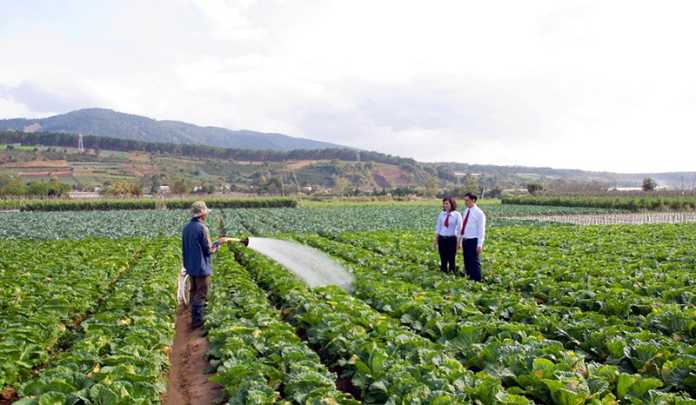There are numerous challenges modern agriculture has to face today because of climate change. And that is in the reality of constantly growing food demand due to the increase in world population. One of the ways to stay on track and develop a successful farming business is to consider taking a credit. For years, farming credit has been a critical tool for the development of agriculture, growing to meet the agricultural sector needs and ensure its prosperity. Crediting is essential for increasing producers’ purchasing power, supporting production techniques modernization, and increasing overall industry’s productivity. Thus, access to finances through agri banks credit is undoubtedly one of the most essential inputs for farming businesses.
Basically, lending programs in the agricultural sector involve short-term or medium-term loans for the replenishment of working capital, preparation for field work, as well as for the purchase of equipment, construction, modernization, or repair of small production facilities. The willingness of banks to lend to farmers may differ depending on the production sector. During the evaluation, niche areas are taken into account: in particular, animal husbandry, horticulture, and gardening require more investment for arrangement, irrigation, purchase of specific equipment, and so on. In addition, these are long-term projects that need constant, stable financing and rarely bring profit in the first years.
At the same time, the possibility of obtaining a loan largely depends on the preparation of the enterprise: its profitability, and in the case of new farms — the quality of the business plan and other calculations that banks will definitely require from the borrower. Luckily, companies like EOS Data Analytics provide specific smart farming solutions to help banks evaluate the agri enterprise’s credibility and mitigate credit default risk.
EOSDA: Precision Agriculture Solutions for Agribanks
EOSDA believes that its satellite-based smart farming solutions can benefit its partners in agribusiness banking through offering invaluable data for the most correct credit risk assessment and management. Also, the company is soon to launch its own agri-focused satellite constellation under the EOS SAT project to ensure even more accurate data provided within its products to cover banks’ particular needs. For instance, before deciding on giving a loan to a landowner, a bank would be able to check the farm’s current and historical data and get information about its productivity through seasons. Such analysis is possible mainly thanks to vegetation indices measurements mapping for the farm’s state visualization.
Challenges EOSDA Solutions Help to Tackle
Among the challenges (risks) agri banks face are:
- Credit default — farmer’s inability to make credit payments
- Lack of data for assessment — not enough information for an accurate farm’s evaluation to occur
- Lack of transparency — clients provide false documentation on the farm
- Revenue forecasting — performing yield prediction to ensure the client will have enough revenue to make loan payment
- Scouting — time consumed on gathering lacking or trustworthy information
The biggest issue agri banks encounter is lowering the probability of credit default through accurate risk assessment. The main task there is to decide if clients are eligible to be issued a loan. For that, banks need to perform analysis of farm-related documentation to evaluate a farmland’s yielding power and make sure a borrower would be able to repay a debt.
The issue is that the documentation may lack the necessary data, and banks need to send scouts for field inspection, which requires extra time, people, and effort. Luckily, satellite-powered tech can help make this process much easier. Having access to farm management software, like Crop Monitoring by EOSDA, banks can remotely and quickly access farm’s data, including the field’s productivity and yielding potential to offer loan conditions accordingly. Besides, the company offers custom yield prediction projects on a field or even a country to enable banks perform the most accurate assessment of risks.
Agricultural Bank and Farmer Relationships
Agriculture is a special industry that has to face climate change issues, growing regulatory quotas, and other unpredictable factors. And agri banks are among the institutions that aid farmers in supporting and developing their businesses.
Primarily, agricultural banks help to increase a farm’s resilience to a variety of different threats. And apart from that, a credit issued by an agricultural bank can help a farmer to start practicing sustainable farming technologies and practices that would be off limits for them otherwise.
Financial Markets
Let’s take Australia, New Zealand, and The Middle East for example. Financial industry in these regions is huge and provides a significant contribution to those economies. For instance, Australia’s financial services market grew by over 13% in 2020-2021 fiscal years, making for almost $11 trillion as of June 2021, where agricultural credits amounted to over $90 billion in August 2021, which is almost $10 billion more compared to the same period of 2020. As for New Zealand, its banking sector contributed almost $8 billion to the state’s economy in 2020. And in the Middle East, just the Top 50 of its banks valued over $500 billion in 2021, so the whole financial sector has to be much bigger. That said, it’s clear that the financial market is growing, including agricultural credit. And with the modern technology available for banks to make accurate risk assessments, it will most likely show more signs of increase in the upcoming years.

































































